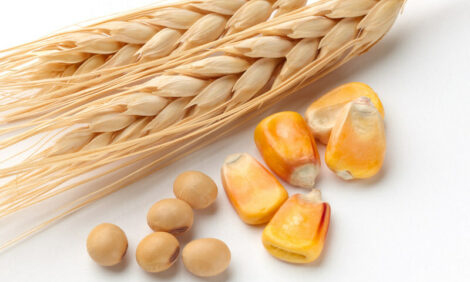



Market Preview: Pork Export Picture Not So Bad
US - Weekly US Market Preview provided by Steve R. Meyer, Ph.D., Paragon Economics, Inc.August exports totaled 307.573 million pounds, carcass weight, 18.4 per cent smaller than one year ago but 27 per cent larger than in August 2007. That makes this the second-largest August on record for US pork exports. US pork imports were 5.4 per cent larger this August vs. one year ago, marking the first month this year that imports were larger than one year earlier.
August brings year-to-date (YTD) exports to 2.648 billion pounds, carcass weight, which puts the YTD total 19.2 per cent lower than one year ago. The YTD percentage through July was 19.3 per cent below the previous year. So far in 2009, the US pork industry has exported 17.7 per cent of total carcass-weight production. That compares to 21.5 per cent for January through August 2008.
Figure 1 again demonstrates the point I have made many times this year: 2009 exports are disappointing only when compared to 2008. Recall that July 2009 exports were 25 per cent lower than those of July 2008, but 61 per cent larger than in July 2007. The numbers for August were not quite so dramatic, but were impressive nonetheless – down 18.4 per cent from last year but 26.9 per cent higher than two years ago.

If we compare this year to the 2004-2007 trend (the purple line in Figure 1), things look much better. While August did make the third month this year that exports have fallen short of this longer-term trend, YTD US exports are still 3.8 per cent higher than that 2004-2007 trend – admirable if not for 2008.
Shipments were lower this August vs. last year to every major market except Mexico and, surprisingly, China. Of course, shipments to Hong Kong were lower than last year, bringing trade with the combined markets down 24.8 per cent vs. August 2008. Shipments to Japan, still our largest export customer (see Figure 2), were down sharply (21 per cent) from last year and left YTD trade with Japan 2.8 per cent lower than in 2008.

While our troubles with shipments to Mexico have been well-documented, our customers to the south are by far the best-performing market for US pork this year. While May was an H1N1-induced export wreck, every other month this year has been stellar. August shipments were 38.4 per cent higher than last year and leave YTD trade with Mexico at 552.7 million pounds, carcass weight, 35.3 per cent higher than last year.
Note also in Figure 2 that August was a record for US shipments to Mexico and that Mexico is within shooting distance of becoming our largest export market. While we have little data from Mexico, anecdotal reports indicate that the Mexican herd has shrunk drastically in response to high feed costs and H1N1 influenza demand disruptions. Smaller domestic supplies have created some of the opportunities that have driven US shipments this year – and could be a strong driver in the future as well.
Bumper Crops Ahead
If anyone had watched only the futures markets early last week, they would have believed that the 9 October USDA Crop Production report had indicated a huge disaster in the US corn and soybean crops. Both of those markets were sharply stronger – primarily due to a weaker US dollar and the prospect for higher exports. And a recovery of oil prices provided even more upward momentum.
Of course, that report did not indicate a disaster. In fact, USDA is now predicting a record corn yield, record corn crop and record soybean crop. The October corn supply and utilization table appears as Figure 3.

The reality of large crops finally pushed corn and soybean meal prices lower by the end of last week. (Figure 4) My feed cost index is still about $8/ton higher than its most recent low the week of 17 September. Good crop progress may push corn and soybean prices lower in the very short term, but I still think there is a limited down side for these prices. Ethanol plants are still profitable and will therefore be aggressive corn buyers.

Domestic soybean supplies are much better, but the world situation is still tight and soybean prices will need to stay high enough to get a sizable crop planted in Brazil and Argentina. I do not think pork producers will leave much money on the table by aggressively pricing feed at these levels – or at least on any weakness through harvest.









